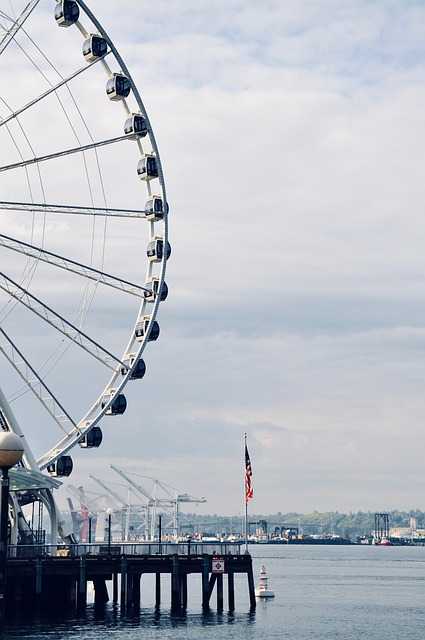Table of Contents
- Exploring the Rich History of American Fine Art Through the Ages
- Key Artists Who Shaped the American Fine Art Landscape
- Collecting American Fine Art: Tips for New Enthusiasts
- The Impact of American Fine Art on Contemporary Culture and Society
- Q&A
- In Retrospect
Exploring the Rich History of American Fine Art Through the Ages
From its inception, American fine art has served as a mirror reflecting the nation’s values, struggles, and achievements. The early settlements brought with them the influence of European artistic traditions, which began to intertwine with indigenous styles. As colonists sought to document their experiences, we see the emergence of portraiture and landscapes, capturing the essence of a new world. Notable figures such as John Singleton Copley and Charles Willson Peale utilized their craftsmanship to celebrate both personal and national identities through their work.
As the 19th century unfolded, America’s artistic voice began to grow clearer, leading to movements that emphasized a distinctly American perspective. The Hudson River School emerged, giving rise to a focus on the sublime beauty of the American landscape. Artists like Thomas Cole and Frederic Edwin Church not only painted breathtaking vistas but also infused their work with deeper themes of transcendentalism and national expansion. This era saw art becoming a tool for engaging with broader societal issues, embracing nature as both a muse and a metaphor for American identity.
Into the 20th century, the influx of modernism shook the foundations of traditional art. This period was characterized by a clear departure from realism as artists began to experiment with abstraction and different mediums. The rise of movements such as American Impressionism, Abstract Expressionism, and the Ashcan School pushed the boundaries of artistic expression. Key figures like Georgia O’Keeffe, Jackson Pollock, and Edward Hopper not only shaped the art scene but also grappled with the complexities of American life, reflecting anxieties and aspirations of post-war society.
Today, American fine art continues to evolve, influenced by an ever-changing cultural landscape. Contemporary artists are now tackling themes of identity, race, and technology, bridging historical contexts with modern narratives. The diversity of expressions seen at museums, galleries, and art fairs underscores the country’s dynamic art scene. As one navigates this rich tapestry, it becomes clear that American fine art is not merely a collection of beautiful works; it is an ongoing dialogue that speaks to the heart of the American experience.


Key Artists Who Shaped the American Fine Art Landscape
Throughout the history of American fine art, several artists have significantly influenced its evolution, introducing unique styles and perspectives that reflect the nation’s diverse culture. Notable among them is Georgia O’Keeffe, often hailed as the “Mother of American modernism.” Her large-scale paintings of flowers and desert landscapes not only showcase her technical prowess but also evoke a sense of place that resonates with the American spirit. O’Keeffe’s ability to capture the essence of the American Southwest has left an indelible mark on the art world, inspiring countless artists to explore their environments with the same depth of feeling.
Another key figure is Edward Hopper, whose masterful use of light and shadow reveals the isolation and quietude of modern American life. Hopper’s iconic works, such as “Nighthawks”, depict urban scenes that delve into themes of solitude and existentialism. His unique perspective on American life during the early 20th century continues to captivate audiences, prompting reflections on both the physical and emotional landscapes of the country. Hopper’s art invites viewers to pause and contemplate the myriad stories within a single moment.
Jean-Michel Basquiat represents a crucial chapter in the dialogue of American fine art, intertwining elements of street culture with fine art practices. Emerging from the New York City graffiti scene, Basquiat’s dynamic works confront social issues such as race, class, and identity. His bold use of color and imagery creates a visceral impact, challenging viewers to think critically about the cultural narratives that shape societal perception. Basquiat’s legacy continues to influence contemporary artists who navigate the complexities of modern identity.
Lastly, Kara Walker has transformed the dialogue surrounding race and history through her poignant silhouettes and installations. Her thought-provoking work often depicts the Antebellum South while critiquing the romanticized views of American history. Walker’s art serves as a powerful commentary on race relations, forcing audiences to confront uncomfortable truths about the nation’s past. By intertwining visual art with historical narratives, she reshapes the American fine art landscape, making it more inclusive and reflective of the diverse experiences that define it.


Collecting American Fine Art: Tips for New Enthusiasts
Embarking on the journey of collecting American fine art can be both exhilarating and daunting. As a new enthusiast, the first step to building a meaningful collection is to educate yourself about the diverse genres and periods of American art. This includes understanding the influence of various movements, such as Realism, Abstract Expressionism, and Contemporary art. Familiarize yourself with notable artists from different eras, including the likes of Edward Hopper and Georgia O’Keeffe, as well as emerging talents who are reshaping the art scene today.
Visiting galleries, museums, and art fairs is essential to gain firsthand experience. Many institutions offer special exhibitions and lectures that can provide invaluable insights. Take notes on pieces that resonate with you and consider what elements—such as color, texture, and form—draw your attention. Engage with curators and artists whenever possible; their perspectives can deepen your understanding and may even guide your collecting decisions.
Another crucial aspect is refining your budget. While fine art can be expensive, it’s important to remember that quality does not always equate to high prices. Start by exploring emerging artists whose works may be more affordable yet hold potential for appreciation. Keep an eye out for local art events or auctions where you can discover hidden gems. Below is a simple comparison table of cost considerations:
| Art Type | Average Price Range | Potential for Value Appreciation |
|---|---|---|
| Emerging Artists | $200 – $2,000 | High |
| Established Artists | $2,000 - $20,000+ | Medium |
| Antique Works | $5,000 – $100,000+ | Variable |
Lastly, consider joining art collector communities, both online and offline. Networking with fellow collectors can provide you with access to private sales, unique insights, and tips on maintaining and displaying your collection. Participation in forums or local collector clubs can become a source of inspiration and support. Remember, collecting is a personal journey; let your passion guide you, and enjoy every moment of exploring the rich tapestry of American fine art.


The Impact of American Fine Art on Contemporary Culture and Society
American fine art has profoundly influenced contemporary culture and society, serving as a mirror reflecting the values and complexities of the nation. From the vibrancy of abstract expressionism to the raw statements made by contemporary artists, this genre encapsulates the lived experiences, struggles, and triumphs of diverse communities. Art movements such as the Harlem Renaissance and Feminist Art Movement have sparked dialogues around identity, race, and gender, driving societal evolution and awareness. Through evocative imagery and powerful narratives, artists challenge the status quo, urging society to confront pressing issues.
In urban landscapes, public art installations and murals have transformed the environment, humanizing the experience of city living. These large-scale works not only beautify neighborhoods but also tell stories, promote social change, and uplift local communities. By engaging with the public, artists break down barriers, inviting residents and visitors alike to participate in a collective conversation. Notable programs like New York’s Art in the Parks showcase art’s role in community revitalization, proving how accessible art can enhance public spaces and promote cultural dialogue.
The emergence of digital art has further strengthened the impact of American fine art on society. With the rise of social media platforms like Instagram, artists can share their creations instantly, reaching global audiences and giving rise to new forms of interaction. This digital revolution encourages diverse artistic expressions and democratizes access to art, enabling emerging artists to gain traction without the traditional gatekeeping of galleries. Furthermore, virtual exhibitions are increasingly common, allowing art enthusiasts to experience collections from their homes, fostering a greater appreciation for American fine art.
Educational initiatives centered around American fine art have become essential in shaping the next generation’s perspective. Schools and organizations implement programs that focus on art history and appreciation, emphasizing the relevance of this form of expression in understanding cultural narratives. By incorporating art integration strategies into curricula, educators inspire students to think critically and creatively about their world. Such initiatives not only nurture potential artists but also cultivate a more informed and culturally engaged society, where art remains a vital component of community and identity.







